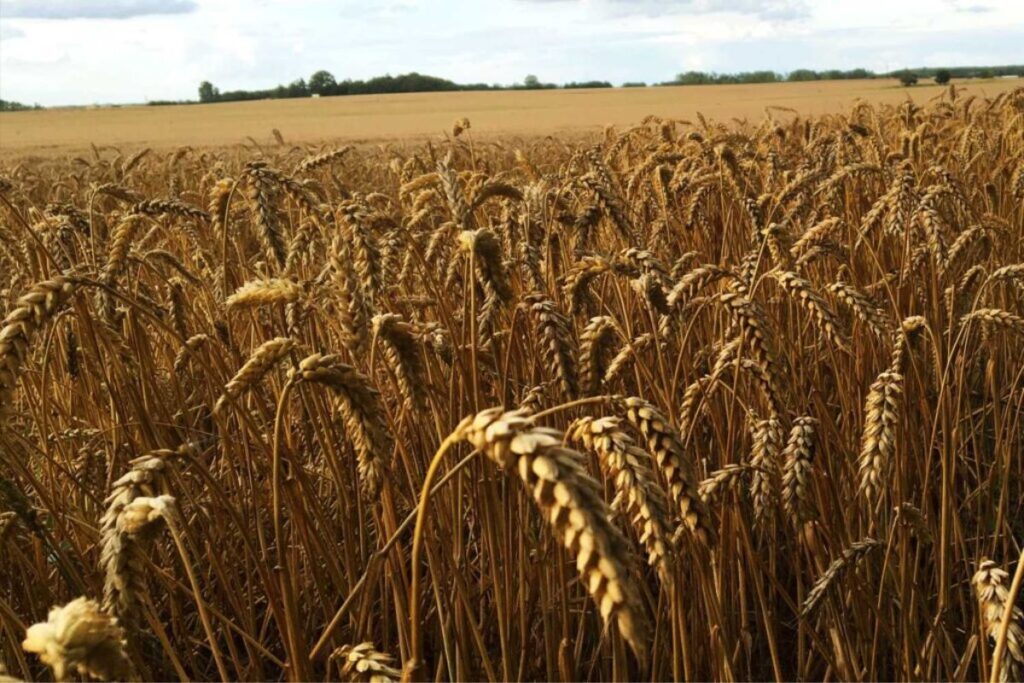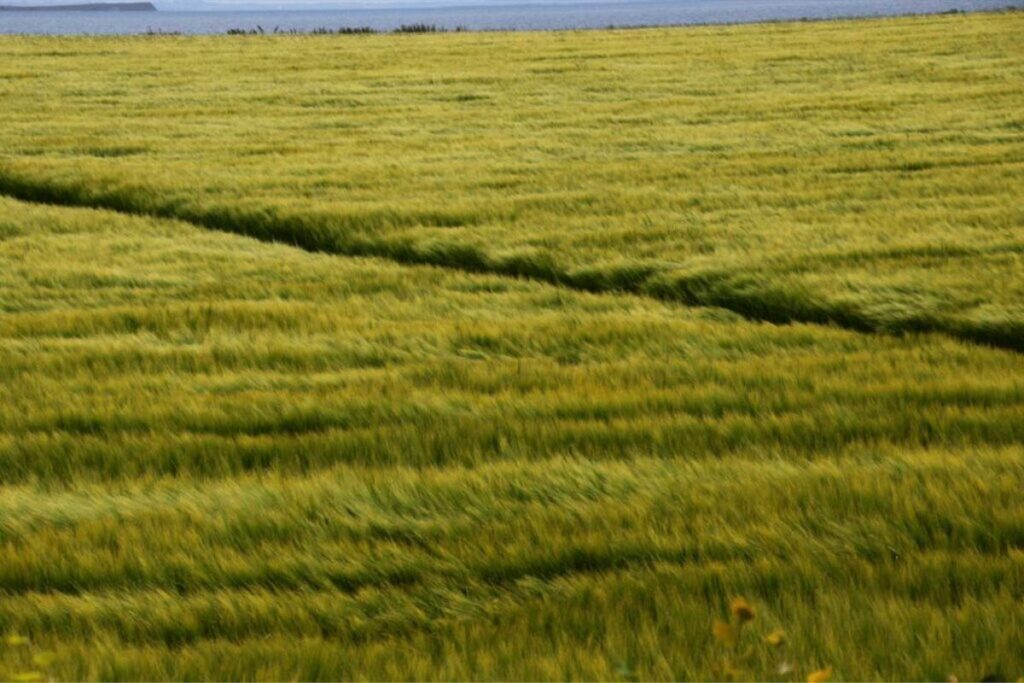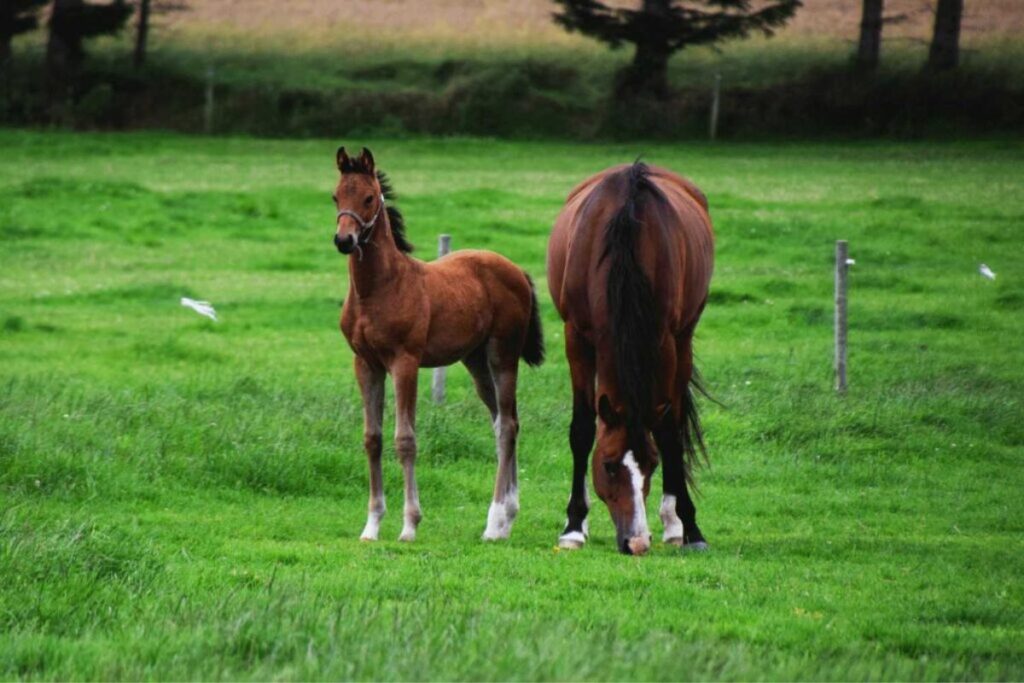Menu

In the UK, there are many types of grain that we use for various purposes, including feeding our horses. Even though they are all classified as 'grain', they aren't all the same. There are differences in vitamin, protein and fibre content, as well as the energy provided to the horse. Moreover, the types of grain vary in structure and composition. Know your grain to avoid issues such as digestive disturbances and weight problems.
Oats are the type of grain most commonly used for horses. They are chosen for the quick and easily digestible energy they provide the horse. The protein, lysine, vitamin and mineral content is low. The fibre content is also low, though higher than in other types of grain. The starch in oats consists of short and simple molecules, which the horse can easily break down and digest in the small intestine, as long as the total quantity isn't too large. Heat treatment, therefore, is not necessary. The husk is fairly soft, and horses can easily chew it. Older horses and those with poor teeth, however, can benefit from heat-treated or micronised oats.
Camilla Fevelie Rasmussen is the person behind Holdyourhorses.dk. She has been riding since she was 10 years old, primarily young horses, and has worked with horses on several occasions. As part of her medical studies at Aarhus University, she began to research horse health matters and found that she could apply her knowledge of medical Latin, anatomy, genetics, embryology, biochemistry, biophysics, and physiology. She then started to become interested in research-based matters and began to write about horse health.
If the horse receives too large quantities, it can cause digestive disturbances in the large intestine, which can lead to abnormal fermentation, colic, diarrhoea, or laminitis. Oats are much debated in relation to the type of energy they provide. They are fast carbohydrates, which some horses react to by becoming overexcited, much like humans can react to sugar. This can be due both to the fast carbohydrates and the oats' content of avenine, an alkaloid that stimulates the central nervous system. If the horse reacts violently to oats, it is better to feed it something with low starch content and high content of fibre and oil.
Black oats are slightly different from traditional oats. The energy content is basically the same, but black oats have a higher content of protein, lysine, and cellulose. They have a slightly lower content of starch and a slightly higher content of oil, as well as a slightly different composition of fatty acids. The differences will, however, be insignificant considering the quantities in which oats are fed. The biggest difference between the two is the price. Black oats are significantly more expensive than regular oats. However, they yield less and have a poorer grain quality.

Wheat has an energy content higher than that of oats. The energy comes from starch. The starch molecules are long and branched, so the horse has difficulty breaking down and absorbing the molecules in the small intestine. Therefore, the risk of digestive disturbances (colic, diarrhoea, swollen legs, and laminitis) is high when feeding with wheat that has not been heat-treated. It is generally unsuitable as horse feed.
Wheat contains gluten, which can stick together in the horse's intestines, so they cannot tolerate too large amounts. If the wheat is heat-treated, the horse can utilise the high energy content of wheat without the risk of disease. Therefore, it is included in many feed mixtures for hard-working horses. Wheat has a low protein, fibre, vitamin, and mineral content, similar to other grains.
Barley is one of the grain types that is widely used locally, as the straw can be used for bedding. Barley has a high content of starch, which can provide energy and calories for work. On the other hand, the content of fibre, protein, lysine, vitamins, and minerals is low. Barley does not cause the same stress reaction that oats can cause. However, a disadvantage of barley is that the horse has difficulty digesting the starch in barley. The starch molecules are long and branched, meaning that it takes the horse a long time to break them down.
The horse's small intestine is relatively short and has limited capacity. Therefore, there is a risk that the starch from barley will pass undigested into the large intestine. This undigested starch can cause incorrect fermentation due to an accumulation of sugar-degrading intestinal bacteria. This accumulation can lead to the horse getting swollen legs and a tendency to diarrhoea in mild cases, and fermentation colic. Other diseases related to the horse's large intestine can occur in severe cases. Therefore, whole barley or rolled barley should not be used for horses in large quantities. If the barley is heat-treated, the starch molecules are broken down, and the horse finds it easier to absorb the starch already in the small intestine. The horse is thereby less likely to experience digestive disturbances in the large intestine.

Corn is also a type of grain. Corn has a high energy content, and it can be utilized if the kernels are cracked or micronized. Whole corn will pass through the system undigested, and the horse will not benefit from them. The corn has a starch content that is higher than in oats and barley. However, the protein and lysine content is lower than in other grains. Fiber, vitamin, and mineral content is also low.
Micronized corn is often used for horses that need to gain weight, as it has such a high energy content. Horses, like with other grains, have difficulty digesting starch if nothing is done about it. In the cracked corn, the starch molecules are long and branched, and the horse has difficulty breaking them down before they reach the large intestine. It is therefore best to use micronized (heat-treated) corn. If the corn is heat-treated, the breakdown of the starch molecules begins, so the horse can break down the starch molecules in the small intestine, thereby avoiding incorrect fermentations, colic, swollen legs, diarrhea, and fermentation colic. The horse thereby utilizes the high starch content in the corn. Corn is the most widely used concentrated feed for horses worldwide.
If the horse does not need a large amount of quick energy, sugar and starch will only strain the stomach and intestinal system. Grain does not provide many chewing movements, compared to the chewing of roughage, which gives three to four times as many chewing movements. This means that not much saliva is formed. The saliva neutralizes the stomach acid, and therefore too much acid enters the stomach and intestines during the digestion of grain. The acidic stomach juice will increase the risk of stomach ulcers and imbalances in the large intestine.
"MANY HORSES REACT TO FAST CARBOHYDRATES, LIKE CHILDREN REACT TO SUGAR. THEIR BLOOD SUGAR SHOOTS UP, AND THEY WILL FIRST BE RESTLESS AND FIRED UP, THEN BECOME SLUGGISH AND TIRED"
Carbohydrate-rich feed also doesn't provide the same feeling of fullness as a fiber-rich feed. A fiber-rich feed will also keep the horse occupied for a longer time. The calcium and phosphorus content of grains are below a one to two ratio, which is the opposite of what is good for horses. Pregnant mares and young horses should preferably have a calcium/phosphorus level that reads two to one. Therefore, horses that are fed a lot of grain need a calcium supplement so their bones do not decalcify. If fed in the right amounts following the correct grain processing and a feeding plan, grain is an excellent supplement and a good source of energy. There is occasional overfeeding with excessive use of unprocessed grain – this way, grain gets a worse and worse reputation. This is a pity. Use it in a healthy and beneficial way.

When the horse is a foal, it has a great need for the minerals that aid in the ossification of the bones. Calcium, phosphorus, and magnesium constitute a large part of the total bone mass. During the horse's first year, the bones should ideally achieve 80% of the total mineral content to reach their full strength. A lack of minerals can result in wide and swollen growth lines, and if it continues; crooked and brittle bones.
It is not only the total amount of minerals that is significant when it comes to the proper development of the bones. The minerals must also be correctly balanced in relation to each other. Excess of one mineral can block the absorption of another. Horses are very sensitive to both calcium and phosphorus deficiencies. Under and over supply of phosphorus is a very serious risk factor in the development of growth problems. Horses can handle an excess of calcium better. In addition to a weaker skeleton, phosphorus deficiency means reduced appetite and a tendency for the horse to chew on woodwork.
Besides grain having an incorrect calcium/phosphorus content in relation to growth, as mentioned, there is a lot of carbohydrate in grain. Overfeeding with carbohydrates causes the blood sugar content to rise. This means that insulin production increases, which in turn leads to an increased production of growth hormone. The bones grow too quickly, and this can cause growth disturbances like osteochondrosis in the horse.
In terms of growth, there are three stages that matter: From birth to weaning; from weaning to adulthood; and from adulthood for the rest of their life. The distribution of carbohydrate, protein, and vitamins/minerals should differ in these three stages.

High-performance horses, such as racehorses, need carbohydrates to meet their energy needs. The very quick and anaerobic work that a racehorse's muscle cells have to perform requires that they are supplied with quickly available and easily absorbable energy so that there is not too much build-up of lactic acid. It still needs fiber-rich feeding on the side to keep the large intestine's bacteria in check and ensure its feeling of fullness – but it needs carbohydrates.
A dressage horse or endurance horse usually performs work at a steady pace, where the horse can absorb oxygen along the way (aerobic work). Here, the horse benefits more from slow energy sources. In this way, the horse is covered for a longer period and avoids large fluctuations in blood sugar levels. It is feed based on digestible fibers, oil, and a smaller amount of starch than for the racehorse. A working horse would be difficult to cover with feed consisting only of digestible fibers and fats, therefore it is necessary to also supply starch.
As mentioned, a feed based on grain is not particularly rich in protein. Horses need protein for body maintenance, muscle cell building, growth, fetal production, and milk production. For regular maintenance, the need for proteins is not particularly great, but when you put the horse to work, the need quickly increases. Most proteins can be produced by the horse itself with the help of the microorganisms in the large intestine, if they are balanced. But essential amino acids like lysine cannot be produced by the horse – they must be supplied. For foals, young horses, pregnant mares, and high-performing competition horses, one should provide high-quality proteins with a high content of lysine.
A diet consisting of oats, supplementary feed, which is often based on grain and molasses, and straw does not have any slow energy sources. Slow energy sources are roughage and vegetable fats. Oil, for example, contains three times more energy than oats per kilogram, and a riding horse can benefit from being given three to four deciliters of oil in its feed ration, as a replacement for a kilo of oats.